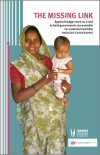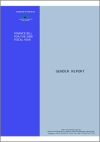FOUND 12
The report, authored by Professor Diane Elson, a leading feminist economist, makes a significant contribution to the advocacy work on the transparency of budgets. It provides arguments for increasing the accountability of government budgets to women's rights.
A summary guide for policy makers, gender equality and human rights advocates" is a publication based on a report by Diane Elson "Budgeting for Women's Rights: Monitoring Government Budgets for Compliance with CEDAW" by UNIFEM 2006.
Budgeting for Women's Rights Monitoring Government Budgets for Compliance with CEDAW: summary..(Fr )
A summary guide for policy makers, gender equality and human rights advocates" is a publication based on a report by Diane Elson "Budgeting for Women's Rights: Monitoring Government Budgets for Compliance with CEDAW" by UNIFEM 2006.
Paper discussing the definition and measurement of Sustainable Development Goal (SDG) Indicator 5.c.1. (reclassified to Tier II) and comparing Indicator 5.c.1 with other SDG fiscal indicators.
The Global Programme Increasing Accountability in Financing for Gender Equality’ was developed to increase financing for national gender equality commitments in sixteen countries and to strengthen government and donor accountability on financing decisions and practices.
This brief explores the relevance of civil society budget analysis and advocacy (i.e., budget work) and its potential as a tool to hold governments accountable for their maternal mortality reduction commitments.
This resource pack authored by Debbie Budlender provides relevant knowledge to facilitate mainstreaming gender-responsive approaches into reproductive health programmes, and the inclusion of specific aspects of gender inequality and disadvantage into national policy frameworks.
The Health Rights of Women Assessment Instrument (HeRWAI) is a tool developed by the Humanist Committee on Human Rights (HOM) in 2006 to enhance lobbying activities for better implementation of women's health rights.
The objective of this report is to review and analyze the impact of the major sectoral programmes to identify some areas of intervention to better take into consideration the gender dimension in the design of public policies.Six new government departments which have adopted gender-sensitive budgetin
This easy-to-read publication seeks to contribute to the reflection process on an approach and a set of instruments that are geared towards the evolution in development thinking and practice.







